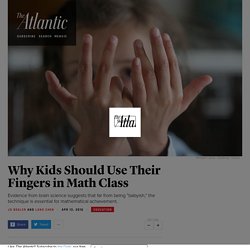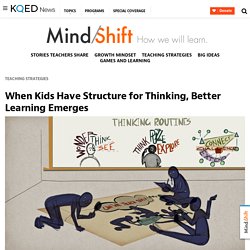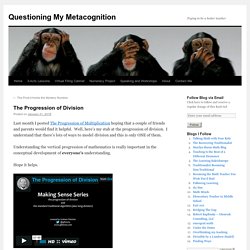

[NCTM16] Beyond Relevance & Real World: Stronger Strategies for Student Engagement. Teaching to the Beat of a Different Drummer. Have you ever said or thought any of the following? “They just add all the numbers! It doesn’t matter what the problem says.” “They don’t stop to think! They just start computing as soon as they’re done reading the problem.” “They don’t even realize this is exactly the same type of situation as the problem we did yesterday!” Then you might be interested in trying out numberless word problems with your students. In essence, numberless word problems are designed to provide scaffolding that allows students the opportunity to develop a better understanding of the underlying structure of word problems. My Blog Posts I’ve written about numberless word problems at various points on my blog. Numberless Word Problems – This is the initial post I wrote about numberless word problems. Problem Banks Below are banks of problems organized around the CGI problem types.
Addition and Subtraction Problem Types Multiplication and Division Problem Types Other Blog Post Collection. The Recovering Traditionalist - Working to help teachers think outside the traditional way of doing, and teaching, mathematics. I had the great pleasure of presenting at the Annual NCTM Conference.

For those of you interested, you can download my presentation on my other website www.MathematicallyMinded.com. The Recovering Traditionalist - Working to help teachers think outside the traditional way of doing, and teaching, mathematics. First Grade Math Fight... Fractions, Proportional Reasoning, and Algebra, Oh my! Okay, so I knew this "Math Fight" was coming.

(Thank you, John Stevens) The standard I was going after was 1.G.3 Although, this is the performance standard (a very simple standard at first glance) that students need to be able to do, my mathematical goal was different. Math Teachers Should Encourage Their Students to Count Using Their Fingers in Class. A few weeks ago I (Jo Boaler) was working in my Stanford office when the silence of the room was interrupted by a phone call.

A mother called me to report that her 5-year-old daughter had come home from school crying because her teacher had not allowed her to count on her fingers. This is not an isolated event—schools across the country regularly ban finger use in classrooms or communicate to students that they are babyish. This is despite a compelling and rather surprising branch of neuroscience that shows the importance of an area of our brain that “sees” fingers, well beyond the time and age that people use their fingers to count.
In a study published last year, the researchers Ilaria Berteletti and James R. Booth analyzed a specific region of our brain that is dedicated to the perception and representation of fingers known as the somatosensory finger area. Give the students colored dots on their fingers and ask them to touch the corresponding piano keys: Teaching to the Beat of a Different Drummer. The Recovering Traditionalist - Working to help teachers think outside the traditional way of doing, and teaching, mathematics. Progressing from One-to-One Counting to Cardinality.
No More Worksheets! Here is a very simple test to determine the effectiveness of your child's mathematics teacher...

Question 1: Does you your child's mathematics teacher assign a lot of worksheets for homework and classwork? If the answer is YES - Not a very effective teacher.If the answer is NO - Likely to be a more effective teachers. “You Can Always Add. You Can’t Subtract.” A/k/a [Makeover] Painted Cubes (See preview.)

That’s a very helpful comment from, Alyssa Boike, a recent workshop participant. Textbooks don’t have that same luxury. Here’s an example. Watch how Connected Mathematics treats the classic Painted Cube problem: Here are elements the textbook has already added: A central question. If you subtract those elements and add them in later, you get to ask interesting questions and host interesting conversations with your students. When Kids Have Structure for Thinking, Better Learning Emerges. Amidst the discussions about content standards, curriculum and teaching strategies, it’s easy to lose sight of the big goals behind education, like giving students tools to deepen their quantitative and qualitative understanding of the world.

Teaching for understanding has always been a challenge, which is why Harvard’s Project Zero has been trying to figure out how great teachers do it. Some teachers discuss metacognition with students, but they often simplify the concept by describing only one of its parts — thinking about thinking. Teachers are trying to get students to slow down and take note of how and why they are thinking and to see thinking as an action they are taking. But two other core components of metacognition often get left out of these discussions — monitoring thinking and directing thinking. When a student is reading and stops to realize he’s not really understanding the meaning behind the words, that’s monitoring.
Ready: 100 questions that promote Mathematical Discourse. Ready: 100 questions that promote Mathematical Discourse. Bons en maths. 5jm29kw38mlq. Douglas. Mathematical Knowledge for Teaching. While many math educators may be able to order fractions from largest to smallest in their sleep, teaching that skill to students and recognizing effective teaching strategies in instructional materials is more complicated.

An adult might have an efficient and effective method of determining the largest fraction within a group–a method that works every time they do it themselves–but this knowledge alone is not enough to help students learn the skill of ordering fractions. In addition to being able to do the skill, a teacher needs to be able to quickly determine if alternative methods will always give the correct answer.
Teachers also need to be able to accommodate students who might order fractions using different methods that are also correct and equally as efficient, while at the same time offering support to learners in the conceptual building stages of ordering fractions when efficiency is not the only consideration. Set A: 1/4, 1/20, 1/19, 1/2, 1/10 Set B: 4/13, 3/11, 6/20, 1/3, 2/5. L'enquête collaborative. Dr cathy bruce research paper math forum 2013.
CEA Neurosymposium 2015 - What is the Best Way for Children to Learn Math? Does your child understand numbers? - Montreal Families - September 2014 - Montreal. The Numeracy Screener is a two-minute test designed for children in Kindergarten to Grade 3 that will help identify those who need help in math By Nathalie Laflamme Math can be a tricky thing, especially for a child.

Struggling with a basic concept can lead to a domino effect of confusion, since the next lesson will be more difficult when directly related. When it comes to learning, all children are different. So how can parents make sure that their child is on the right track? The Numeracy Screener, a free test that is available for download and only takes two to four minutes to complete, can help parents determine whether their child needs some extra help in math. The test was PhD student Nadia Nosworthy’s thesis, and was supervised by Dr. 1994 Arith Last Holdout. From Stanford Online's "How To Learn Math for Teachers and Parents": Number Talks.
From Stanford Online's "How To Learn Math for Teachers and Parents": Number Talks. Division Meets Problem Solving and CRA. Why Growth Mindsets Are Necessary to Save Math Class. Questioning My Metacognition. The Progression of Division Last month I posted The Progression of Multiplication hoping that a couple of friends and parents would find it helpful.

Well, here’s my stab at the progression of division. I understand that there’s lots of ways to model division and this is only ONE of them. Understanding the vertical progression of mathematics is really important in the conceptual development of everyone’s understanding. Hope it helps. 5 Tips To Help Students Develop Conceptual Understanding in Math. As a teacher of mathematics who focuses on inquiry-based instruction, I often get asked how I go about developing my students’ conceptual understanding.

Early in my teaching career, I became very good at teaching procedures through direct instruction. As my teaching methods have evolved, especially since embedding the math practices in every lesson, I’ve pushed myself to use inquiry-based tasks and hands-on manipulatives with my students as a way to help them develop their conceptual understanding. Yet there are still topics (such as solving inequalities with a negative coefficient) where I feel unprepared to teach in this way.
I recently got a sneak peak of Leah Alcala’s new video, Concept First, Notation Last. Language%20in%20the%20mathematics%20classroom. Area Model - Number Sense to Algebra. Upload Watch Queue Queue Watch QueueQueue Loading... Watch Queue Queue. 5m video illustrating how multiplication is taught from 2-5th grade. Wish @gfletchy would make loads more of these. A serious rant about homework. (iStock) It’s one of those perennial subjects that causes consternation in homes and schools across America, decade after decade: homework. In this post, a former teacher and mother offers her serious rant about homework her children are getting. Blaine is now a full-time practicing attorney in New Jersey, and she has written several popular posts, including “Pearson’s wrong answer–and why it matters in the high-stakes testing era” and “You think you know what teachers do. Right? Wrong.” The Progression of Multiplication. Éducation Canada. Stratégies et outils pour enseigner différemment au 21e siècle Dans cet article, l’auteur nous parle d’un document inédit « Manifeste pour une pédagogie renouvelée, active et contemporaine » qu’il a rédigé, au printemps dernier, avec huit autres passionnés de l’éducation.
Selon ces neuf penseurs, l’intégration des technologies à la pédagogie, la création d’espaces collaboratifs et métacognitifs imbriqués à même la démarche d’apprentissage, la stimulation de la créativité ainsi que la valorisation de la curiosité et de l’expérimentation, permettent à l’école de créer des conditions gagnantes pour voir émerger un apprentissage approfondi et enrichi. Number Talks And Creating A Classroom Culture Full Of Participation.
This is part of Crystal Morey’s Getting Better Together series, Making Number Talks Matter Book Study. Crystal and all the Teaching Channel Laureates are going public with their practice and seeking support in getting better from colleagues and the Tch community. So it happens. A student finally feels comfortable and safe enough in your classroom to share his thinking. The Truth About The Teacher Mindset. I’ve said it again and again, both here and to the beginning teachers I coach: the job of a teacher is never done. I say it so much because I still find it hard to swallow. I’m the kind of person who likes to make to-do lists and methodically check things off. This was how I spent my first few years of teaching — making endless lists then drowning in them as I collected more and more things to do. I wondered why no matter how much effort I put into my job, it never got more manageable.
As my list grew longer and longer, I developed chronic stomach pain and started clenching my jaw. When I started to scale back, I was surprised at the results. Dear Teacher: Heartfelt Advice for Teachers from Students. Stop all the testing in math, and set free a generation of American mathematicians. Student-centered Assessment Video Suite. What does student-centered assessment look like in the classroom? Student-centered Assessment Video Suite. #nwmc15 IGNITE Speaker 1: Robert Kaplinsky. Making Sense / part deux. Simon Gregg recently posted « Making Sense » on his blog. Its the story about what happened when he asked his students the following: ALMOST ALL of his students responded with 30 as the answer. Robert Kaplinsky - Glenrock Consulting, LLC. Fix It: An Activity for Ordering Fractions. CEA Neurosymposium 2015 - What is the Best Way for Children to Learn Math? La croissance professionnelle…transformée ! – innovÉduc.
Dans nos écoles, différentes occasions de développement professionnel ont lieu tout au long d’une année scolaire pour nous et notre personnel. Souvent, ce développement professionnel est en lien avec des initiatives ministérielles, des objectifs systémiques ciblés par le conseil scolaire, ou même des objectifs spécifiques à une école afin d’améliorer le rendement des élèves. Fractions: Learning & Teaching. DreamBox Learning Math. How To Develop Worthwhile Math Problems. 1st Grade Story Problems.
MakingthinkingvisibleEL. PSPI_9_3. MakingthinkingvisibleEL. Subitizing 1. Using Ten-Frames to Understand Numbers from 11-20. No More Math Wars. Numbers play an important role in our everyday lives. NWMC15 - Estimation 180. Planning for Mathematical Understanding: Fractions Across the Junior Grades – VIDEO. Learning Mathematics Within Contexts – VIDEO. Using Math Mistakes in Whole-Group Discussions « Math Mistakes. The Problem With Math Problems: We're Solving Them Wrong - The New York Times. EdCamp - Google Sheets. EdCamp - Google Sheets. La classe inversée. Qu’entend-on par un apprentissage professionnel?
The Value of Mistakes: Should It Matter How Long A Student Takes To Learn? Loving the Math, Living the Math - Part 2 - VIDEO. Commutativity in Fraction Multiplication. SolveMe Mobiles. Conférence virtuelle provinciale TacTIC: 21-22 mai 2015 (with images, tweets) · jprofNB. Memorizers are the lowest achievers and other Common Core math surprises. Bloups! Application pour apprendre la lecture. To Teach Math, Study Reading Instruction. TMERC: A Journey Through Lesson Study. TMERC: A Journey Through Lesson Study. Another Way to Subtract. Webcasts For Educators. Shake Up Learning - Shake Up Learning Home Page. 5 Ways to Become an Education Game Changer. Website of the Ontario Software Acquisition Program Advisory Committee.
Why It's Time to Give Up Grades - Work in Progress. 3 Kindergarten Lessons You Should Ignore on Social Media. Sustaining Outdated Practices Will Not Transform Schools. Five Things Educators Will Have To Accept & Embrace. (5) #whatisschool - Recherche sur Twitter. Socratic Questioning: 30 Thought-Provoking Questions to Ask Your Students. ApprendreEnseignerInnover.ca.
TRANSFORMING EDUCATION FROM THE GROUND UP. Zoom sur l'expertise pédagogique - Accueil. Videos. Welcome to Metamorphosis Teaching Learning Communities - Lucy West. Teaching Your Students How to Have a Conversation. The Profile of a Modern Teacher. Why the Best Teachers Don't Give Tests Univ of Michigan_Dr. Melissa Gross. 10 of the Most Engaging Uses of Instructional Technology (with Dozens of Resources and Tools) Tweets en rapport avec le hashtag #ntchat sur Twitter. Tweets about #ntchat hashtag on Twitter. Clock_buddies.pdf.